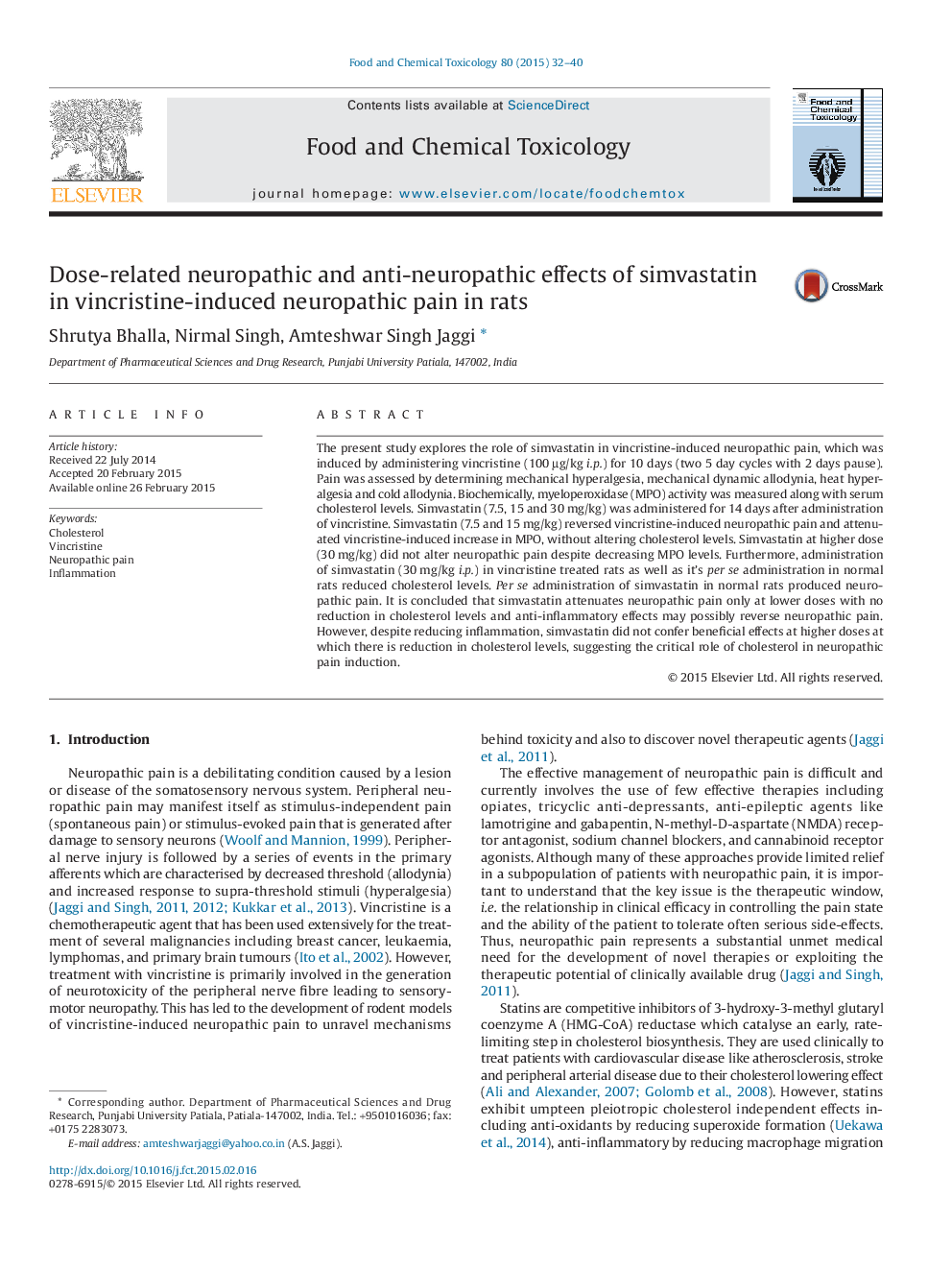| Article ID | Journal | Published Year | Pages | File Type |
|---|---|---|---|---|
| 5849794 | Food and Chemical Toxicology | 2015 | 9 Pages |
â¢Simvastatin (7.5 and 15âmg/kg) reverses vincristine-induced neuropathic pain.â¢Simvastatin (30âmg/kg) did not alter neuropathic pain.â¢Per se high dose of simvastatin produced neuropathic pain in normal rats.â¢Anti-inflammatory effects with no change in cholesterol may reverse neuropathic pain.â¢Reduction in cholesterol at high dose of statin may contribute in neuropathic pain.
The present study explores the role of simvastatin in vincristine-induced neuropathic pain, which was induced by administering vincristine (100âµg/kg i.p.) for 10 days (two 5 day cycles with 2 days pause). Pain was assessed by determining mechanical hyperalgesia, mechanical dynamic allodynia, heat hyperalgesia and cold allodynia. Biochemically, myeloperoxidase (MPO) activity was measured along with serum cholesterol levels. Simvastatin (7.5, 15 and 30âmg/kg) was administered for 14 days after administration of vincristine. Simvastatin (7.5 and 15âmg/kg) reversed vincristine-induced neuropathic pain and attenuated vincristine-induced increase in MPO, without altering cholesterol levels. Simvastatin at higher dose (30âmg/kg) did not alter neuropathic pain despite decreasing MPO levels. Furthermore, administration of simvastatin (30âmg/kg i.p.) in vincristine treated rats as well as it's per se administration in normal rats reduced cholesterol levels. Per se administration of simvastatin in normal rats produced neuropathic pain. It is concluded that simvastatin attenuates neuropathic pain only at lower doses with no reduction in cholesterol levels and anti-inflammatory effects may possibly reverse neuropathic pain. However, despite reducing inflammation, simvastatin did not confer beneficial effects at higher doses at which there is reduction in cholesterol levels, suggesting the critical role of cholesterol in neuropathic pain induction.
